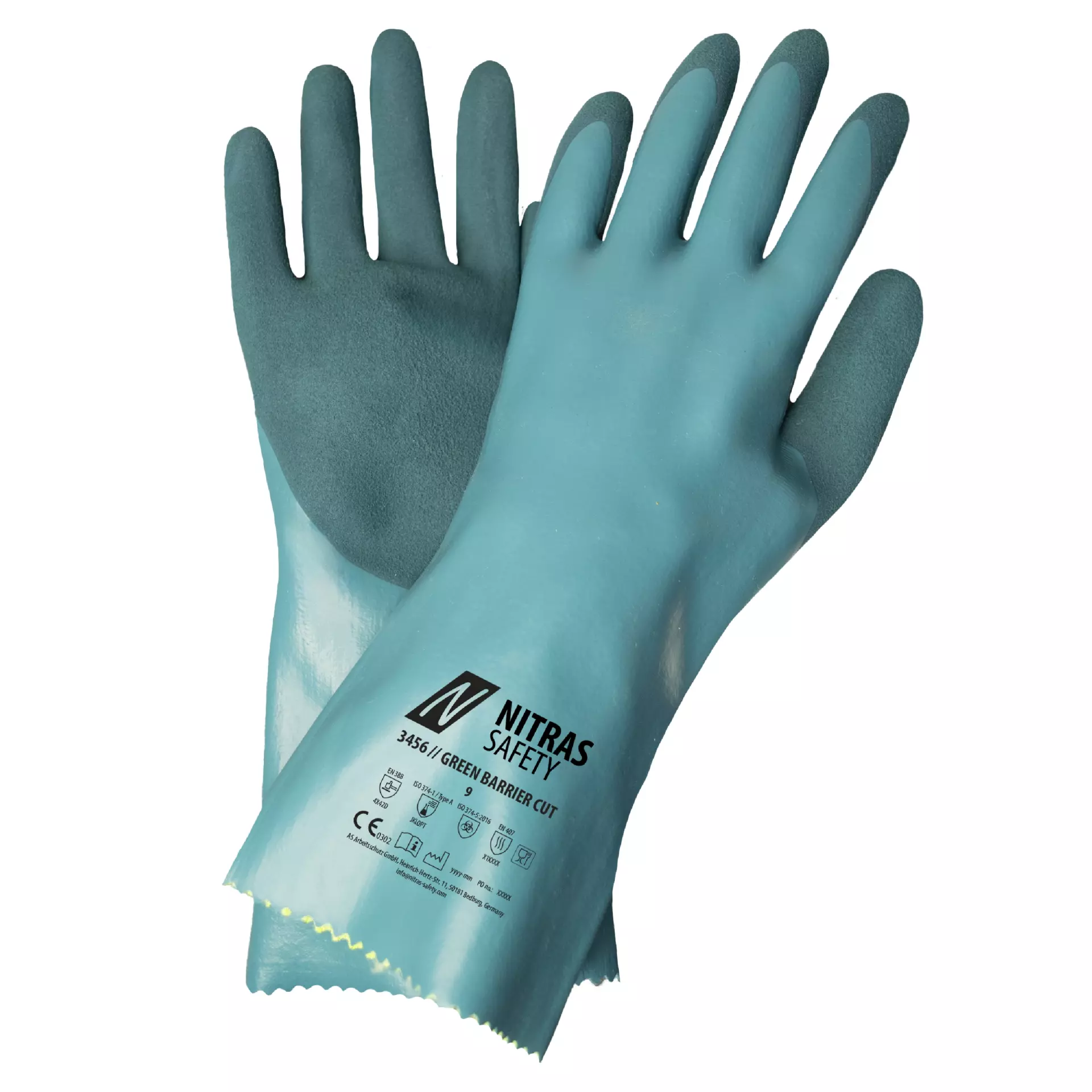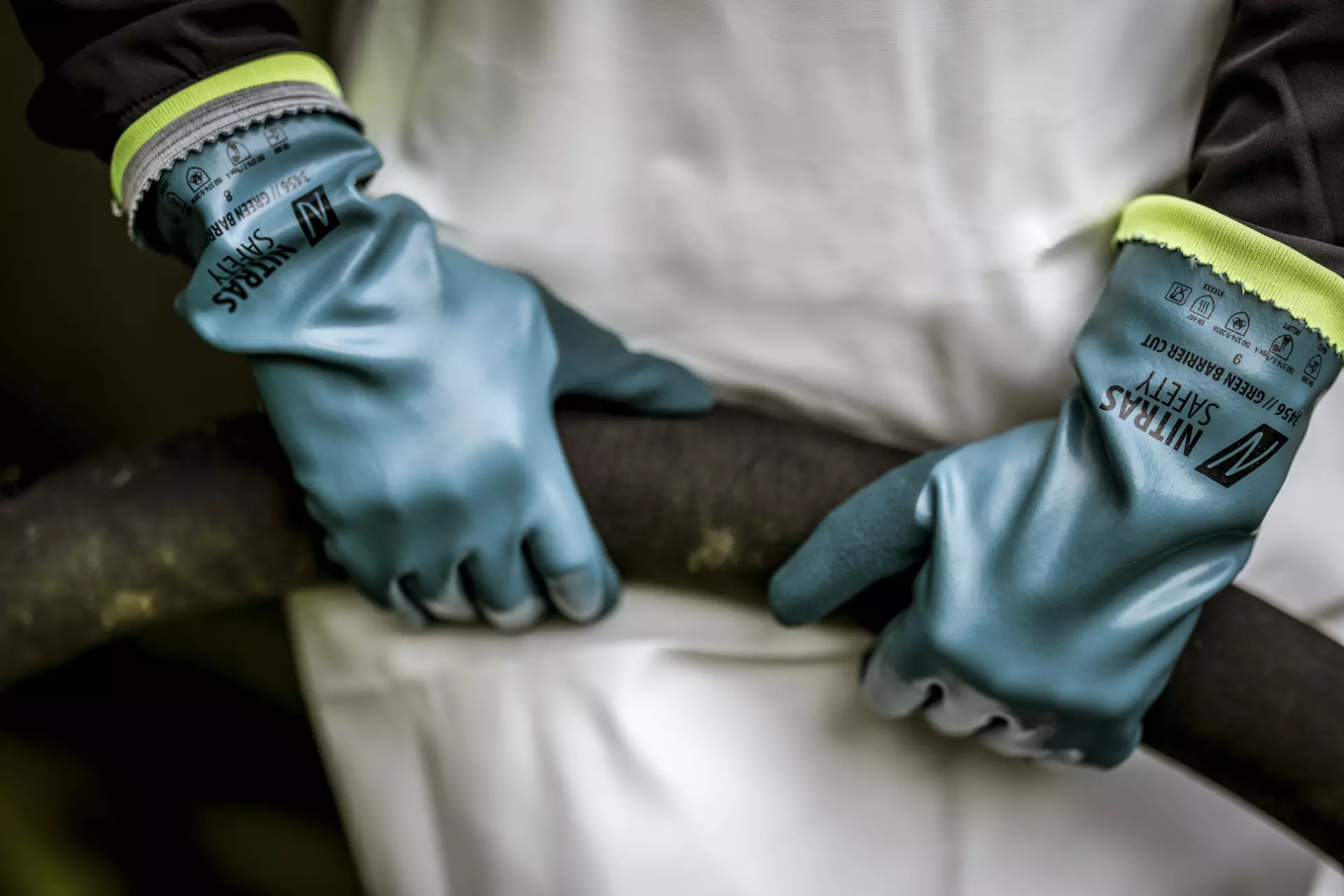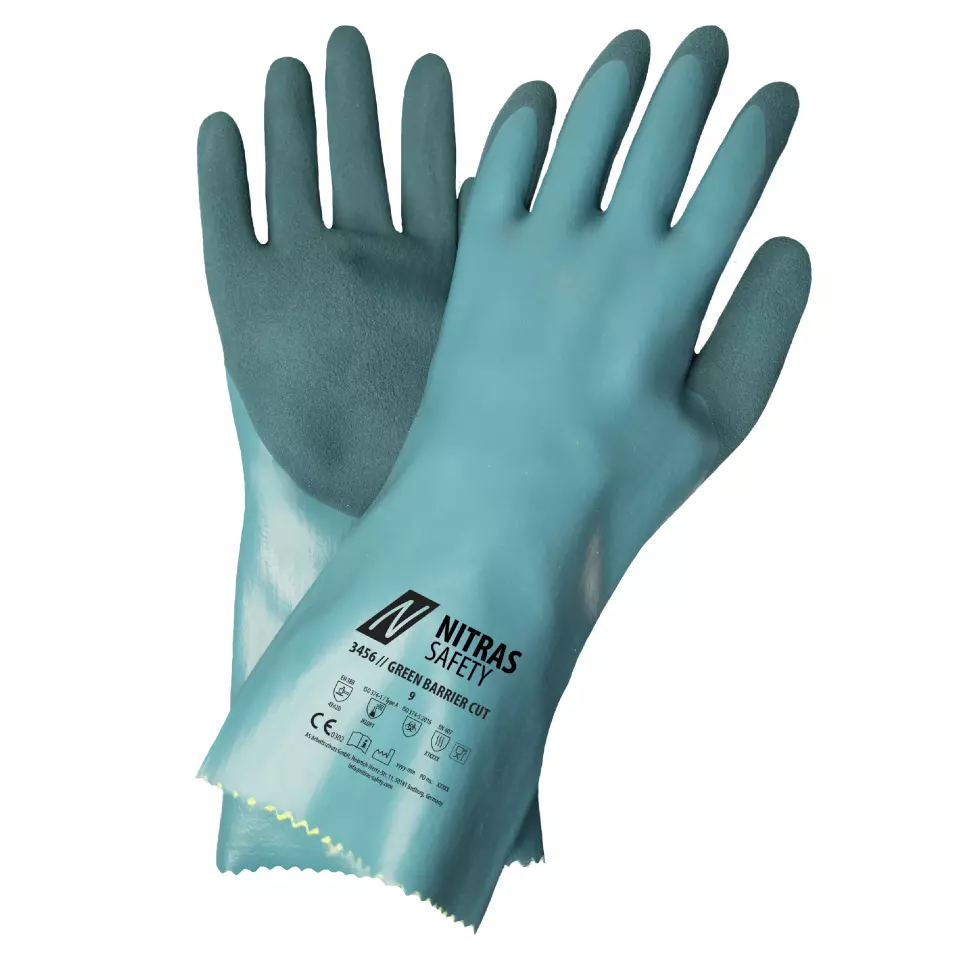

Features You'll Love

Cuff Style · Open
EN 388 · Cut Resistance, ISO 13997 Level D, Abrasion Resistance Level 4, Tear Resistance Level 4, Puncture Resistance Level 2
Determines how the glove secures around the wrist, affecting fit, protection from debris, and ease of putting gloves on and taking them off.
Offers strong protection against cuts from utility knives, glass edges, and sheet metal.
Offers the highest level of protection against intense rubbing and wear from rough materials.
Offers the highest level of protection against tearing, withstanding a strong force before ripping.
Withstands moderate force from sharp objects like heavy-duty splinters or wires.

EN 407 · Radiant Heat Level X, Burning Behaviour Level X, Molten Metal Resistance Level X, Metal Splash Resistance Level X, Heat Contact Level 1, Heat Convection Level X
This product was not tested for protection against radiant heat, which is intense heat that can be felt from a distance. It does not claim to offer protection for tasks involving prolonged exposure to radiant heat sources.
This product has not been tested for its performance when exposed to an open flame. It is not rated for fire resistance and should not be used for protection against direct contact with flames.
This product has not been tested for resistance against splashes of molten metal. It provides no claimed protection and should not be used for welding, foundry work, or other tasks with molten metal risks.
This product has not been tested for resistance against splashes of molten metal under the EN 407 standard. It does not offer rated protection for tasks where this is a risk, such as welding.
Provides protection when briefly touching hot objects. Certified for contact with surfaces up to 100°C for at least 15 seconds, offering short-term protection against burns from items like hot cookware or machinery parts.
This product was not tested for protection against convective heat, which is the transfer of heat through moving air, such as from a flame. Therefore, it has no claimed performance level for this specific thermal risk.
Nitras
GREEN BARRIER CUT Chemical Protection Gloves, Petrol, 12 pairs
GREEN BARRIER CUT Chemical Protection Gloves, Petrol, 12 pairs
4.8 / 5
1 948,24 kr
Price per 12 pairs
162,35 kr / pair
Choose size
Free delivery
Features You'll Love

Cuff Style · Open
EN 388 · Cut Resistance, ISO 13997 Level D, Abrasion Resistance Level 4, Tear Resistance Level 4, Puncture Resistance Level 2
Determines how the glove secures around the wrist, affecting fit, protection from debris, and ease of putting gloves on and taking them off.
Offers strong protection against cuts from utility knives, glass edges, and sheet metal.
Offers the highest level of protection against intense rubbing and wear from rough materials.
Offers the highest level of protection against tearing, withstanding a strong force before ripping.
Withstands moderate force from sharp objects like heavy-duty splinters or wires.

EN 407 · Radiant Heat Level X, Burning Behaviour Level X, Molten Metal Resistance Level X, Metal Splash Resistance Level X, Heat Contact Level 1, Heat Convection Level X
This product was not tested for protection against radiant heat, which is intense heat that can be felt from a distance. It does not claim to offer protection for tasks involving prolonged exposure to radiant heat sources.
This product has not been tested for its performance when exposed to an open flame. It is not rated for fire resistance and should not be used for protection against direct contact with flames.
This product has not been tested for resistance against splashes of molten metal. It provides no claimed protection and should not be used for welding, foundry work, or other tasks with molten metal risks.
This product has not been tested for resistance against splashes of molten metal under the EN 407 standard. It does not offer rated protection for tasks where this is a risk, such as welding.
Provides protection when briefly touching hot objects. Certified for contact with surfaces up to 100°C for at least 15 seconds, offering short-term protection against burns from items like hot cookware or machinery parts.
This product was not tested for protection against convective heat, which is the transfer of heat through moving air, such as from a flame. Therefore, it has no claimed performance level for this specific thermal risk.
Product description
Professional chemical protective gloves featuring a sophisticated dual-layer coating system designed for superior protection and grip performance. These 35-centimeter gloves incorporate an 18-gauge carrier material for exceptional comfort and dexterity, while providing high cut protection and resistance against microorganisms and bacteria. The specialized coating configuration, with a base layer and sanded upper coating partially covering the palm and fingertips, delivers excellent dry and oil grip characteristics.
Product Features:
- Double-layer protective coating system
- Special yarn construction with 18-gauge carrier material
- Partial coating on palm and fingertips for enhanced grip
- Protection against microorganisms and bacteria
- High cut resistance rating
Technical Details:
- 35 cm length
- Base coating: Special protective formulation
- Upper coating: Sanded special coating
- Food contact approved
Recommended Applications:
- Food processing and handling
- Chemical handling operations
- Applications requiring cut protection
- Environments with bacterial exposure risk